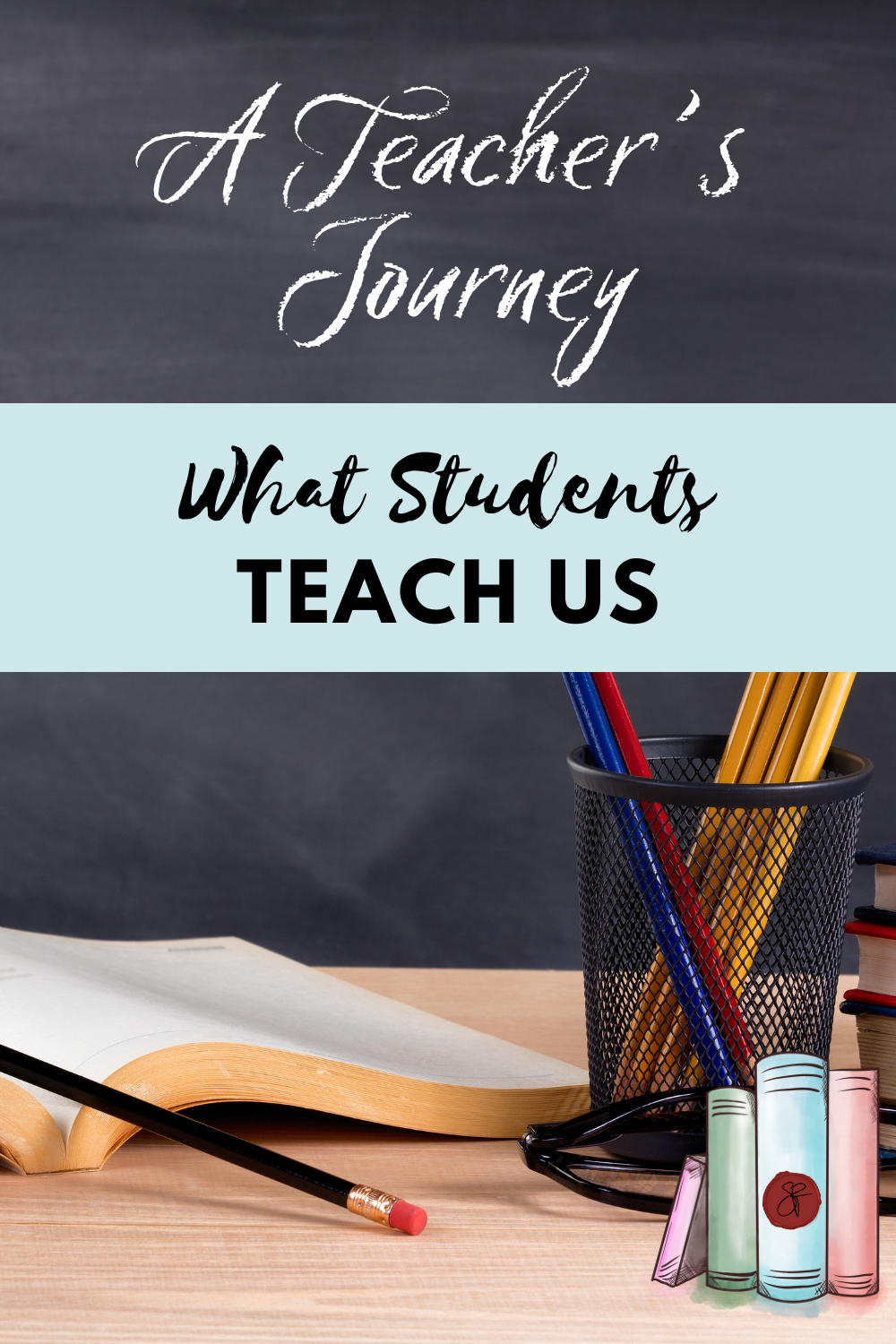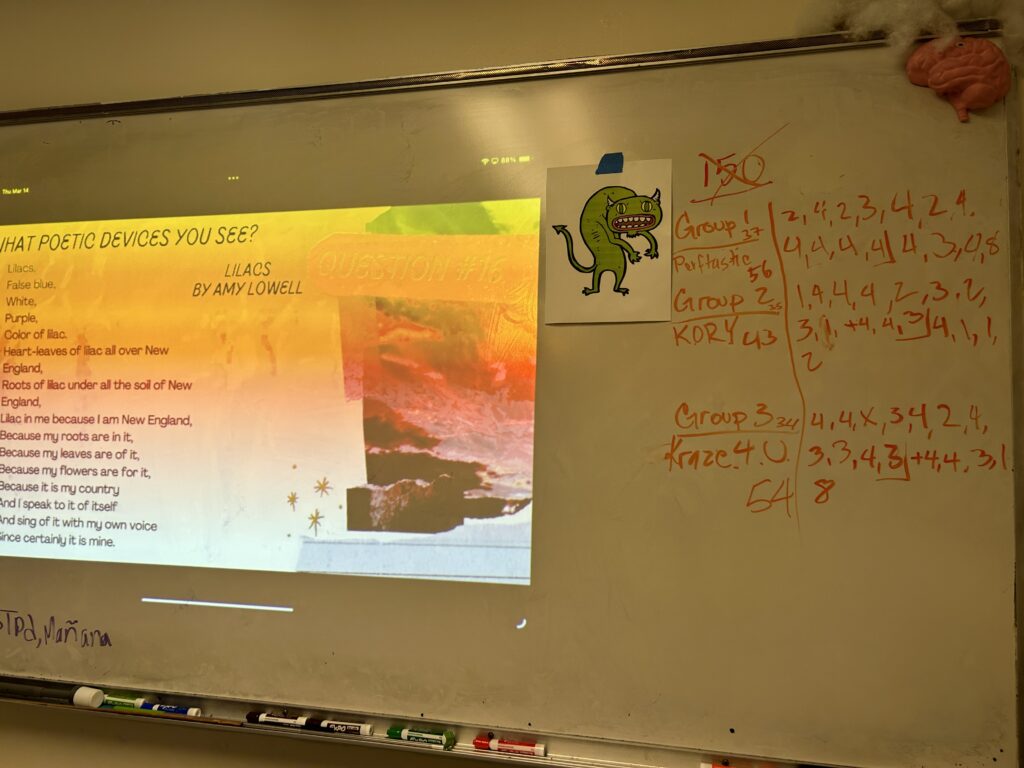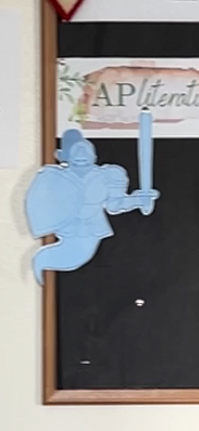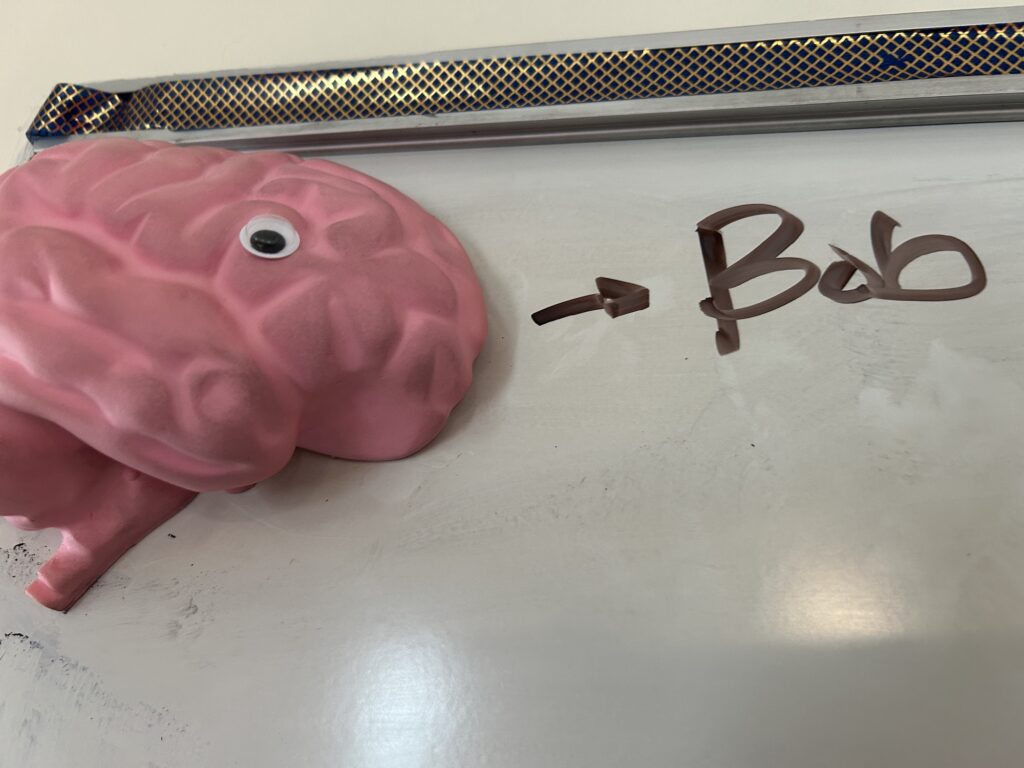While there are countless tales of did-you-knows students share, in a nutshell of a teacher’s journey, here is what students teach us.
Learning in a classroom goes both ways. We educators share knowledge and passion about the subjects we teach, while our students educate us about thinking outside of the box and how to connect with fellow human beings.

We learn through play and we play games throughout our entire life, so whether you’re teaching kindergarten or AP seniors, try to incorporate playtime into your classroom.
S. Faxon Tweet X
Thinking Outside of the Box
Teaching is hard work. You never know what to expect in a day and there is never a dull moment, but the laughter of my students remind me to relax and have fun. It may not always appear that way to them when they are having a difficult time settling in or taking tests, but having a job where I can be goofy to help my students remember things is a gift and one I am very grateful for.
What are some outside of the box activities you can do in your classrooms?
Using Personal Stories
The easiest place to start is by using your own life or stories about people you know (where appropriate and with alternate names) to make connections with your classe’s concepts to the “real world.”
Where possible, I’ll reference stories from my own life, which one of my students said made me “more trustworthy” and that they grew to respect me as a result of my anecdotes.
I’ve been with the same group of students for a few years so I feel very comfortable sharing with them, but only share what you’re comfortable with them and share what’s age/grade appropriate for them.
For example – I teach a class called Life Skills, where, on top of it being mostly study hall, we prepare our high school seniors for life after high school. They learn about financial literacy, college preparedness, including how and when to pick their classes, how to keep track of their classes, and being advocates for their education and financial aid. During this class, I’ve shared many stories about my college experiences, from what to do when you have issues with your roommates, ensuring they have the right food package and extra food and water in their dorms (my school was in New York and we had so many situations where leaving the dorms to get food was unsafe due to the weather.) But it’s these types of stories that I’ll occasionally call the back-in-my-days tales that make me the teacher “real” to them.
By sharing these stories, you’re not just the teach who pulls out a cot from behind your desk after 3pm, curls up and reapperates the next morning somehow looking refreshed and ready to start all over again. (Honest-to-goodness, one of my high schoolers said the previous scenario to me as what she envisioned to be a teacher’s life. She was amazed that I lived in a house, which was not the back corner of my classroom.)
Engaging and Fun Lesson Plans
Fun.
Make learning fun.
We learn through play and we play games throughout our entire life, so whether you’re teaching kindergarten or AP seniors, try to incorporate playtime into your classroom.
Tap into your high school self and think about what would make you chuckle and think, Wow, this teacher is weird… but in a good way.
Some of the things I’ve done is: I’ve held up a printed ghost on a stick every time the ghost of King Hamlet would speak while my AP Lit Students were reading Hamlet. I’ve also had my students play Dungeons & Dragons-style literary trivia, where the students were divided into teams and used dice to vanquish the Sowter (a monster of ignorance).


I love using games and teamwork to help my students learn. In my psychology class, I had my students in groups to practice teamwork, critical thinking, active recall, and creativity by creating games designed to demonstrate their comprehensive learning of subjects in AP Psychology. This was such a fun activity and by building these mnemonics, students were able to exhibit what they learned while also teaching their peers.
The students actually remember the content of what we’re learning because it gave them an opportunity to teach. The best way to learn is to teach, and how great is it if you can also have fun while doing it?
I also have a life-size magnetic brain that lives on our white board for Psychology – one of the students gave the brain googley eyes and my 8th graders named the left hemisphere Bob and the right hemisphere Timmy. My 8th graders also named the snake plant I keep in my classroom, Bartholomieu Plantmeister the Third.

Connecting with Each Other
Students want to learn. It’s up to us as educators to craft our lessons so our students are engaged and understand why they are learning what is before them. By building bridges between the content of our classrooms and to the lives of our students, past, present, and future, they make connections to why we are reading about Hamlet or how they may use geometry to assemble furniture from Ikea in their dorm rooms.
With Hamlet, many of our discussions were about mental health awareness. One of my students wrote in his reaction paraphrase to a scene about how they had never identified with a character before; they wrote about how Hamlet was hurting and that everyone judged him, but no one wanted to listen to him, which this student expressed they had experienced as well.
By connecting our students to characters, they are able to see that what they are experiencing is normal and that they are not alone.
When it makes sense to our students, they tune in, or “lock in,” as they are saying these days.
With stories, personal stories, fictional stories, stories that make sense to our students, we resonate with them on a far deeper level than we would with dry lectures.
I love having conversations with my students as I teach. I try to spend the first couple of minutes of class visiting with my students. I also say a chipper good morning to my students coming through my door with their names to every single student, letting them know that they are seen and heard and cared about, letting them know that I am in their corner, even when they’re having rough days.
I cannot express the joys of being a teacher enough. Again, it is a challenging job, but seeing these young people grow has been and is a beautiful gift. So bring that joy into your classroom with a little creativity, play, and educational games.
What do you do in your classroom that’s fun and engaging? Share below in the comments and thank you for reading!
-Sarah

